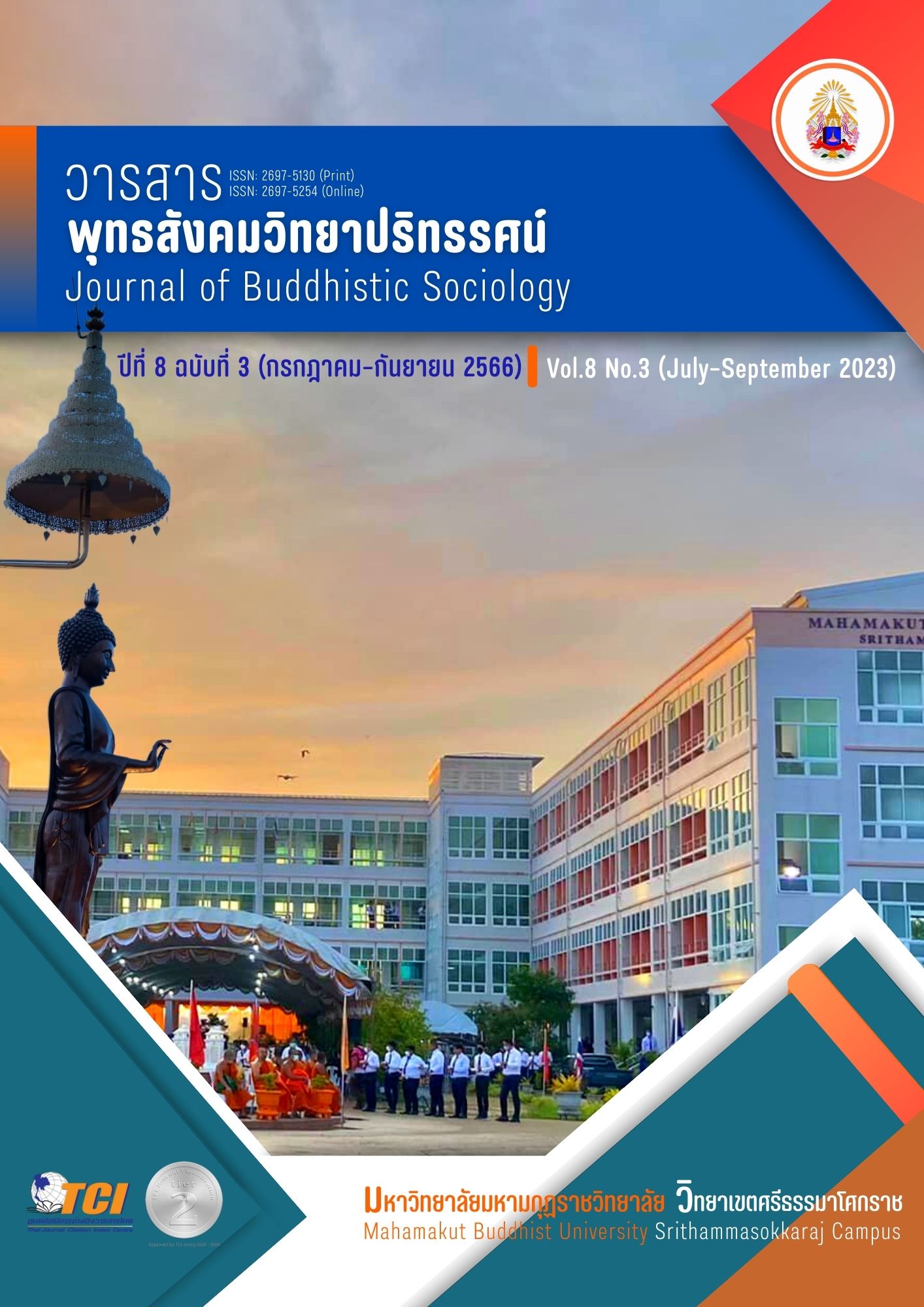THE EVALUATION OF THE HEALTH PROMOTING SCHOOL PROJECT OF RAJAPRAJANUKROH SCHOOL 5, NAKHON SI THAMMARAT PRIMARY EDUCATIONAL SERVICE AREA OFFICE 1
Main Article Content
Abstract
This evaluation research aimed to assess the context, input, process, output, and impact of the health promotion school project of Ratchaprachanukroh School 5 under the Nakhon Si Thammarat Primary Educational Service Area Office Area 1. The research employed the evaluation model of the CIPP. The sample group comprised the school administrators, teachers, students, and parents, 253 people in total. The research instrument was an opinion questionnaire. The statistics used for data analysis were percentage, standard deviation, and content analysis.
The research showed that:
The overall result was at the highest level. When considering each aspect, the process had the highest average, followed by the output, the impact, the context, and the input, respectively, as follows:
1. Context: The operating time was appropriate and could have led to the practice that actually achieves the goal with the highest average. The operation to achieve the project goals was appropriate and consistent with the needs of students, teachers, parents, and the community, with the lowest average.
2. Inputs: The use of resources was supported by many sectors to drive operations to meet the objectives and be worthwhile, with the highest average. A School having a database system that linked between network partners had the lowest average.
3. Process: The planning process had the highest average. The process of bringing the evaluation results to improve and develop had the lowest average.
4. Product: Students receiving adequate lunch services had the highest average. The school providing opportunities for the community to participate in the project at every step had the lowest average.
5. Impact: The item that Students participating in the project with having good mental health and being cheerful had the highest average. Students' ability to decide and choose how to refuse every time they are persuaded had the lowest average.
Article Details

This work is licensed under a Creative Commons Attribution-NonCommercial-NoDerivatives 4.0 International License.
References
กรมอนามัย กระทรวงสาธารณสุข. (2548). แนวทางการดำเนินงานโรงเรียนส่งเสริมสุขภาพ. นนทบุรี: โรงพิมพ์ชุมนุมสหกรณ์การเกษตรแห่งประเทศไทย.
กระทรวงศึกษาธิการ. (2545). หลักสูตรการศึกษาขั้นพื้นฐาน พุทธศักราช 2544. กรุงเทพมหานคร: โรงพิมพ์องค์การรับส่งสินค้าและพัสดุภัณฑ์.
จงใจ จึงตระกูล. (2550). การประเมินโครงการโรงเรียนส่งเสริมสุขภาพ สังกัดเขตพื้นที่การศึกษา นครศรีธรรมราช เขต 1. ใน วิทยานิพนธ์ครุศาสตรมหาบัณฑิต สาขาวิชาการบริหารการศึกษา. มหาวิทยาลัยราชภัฏนครศรีธรรมราช.
ทนงศักดิ์ โพธิ์เกตุ. (2561). รูปแบบการบริหารเพื่อพัฒนาสู่โรงเรียนคุณภาพของโรงเรียนบ้านดอนแยง สำนักงานเขตพื้นที่การศึกษาประถมศึกษาเชียงราย เขต 4. วารสารสังคมศาสตร์และมานุษยวิทยาเชิงพุทธ, 6(1), 286-300.
ธิดารัตน์ รัฐวิเศษ. (2550). ปัจจัยที่มีความสัมพันธ์ต่อการนํานโยบายโรงเรียนส่งเสริมสุขภาพ ไปสู่การปฏิบัติของโรงเรียนระดับการศึกษาขั้นพื้นฐานจังหวัดนครปฐม. ใน วิทยานิพนธ์ศึกษาศาสตรมหาบัณฑิต สาขาวิชาพัฒนศึกษา. มหาวิทยาลัยศิลปากร.
บุญชม ศรีสะอาด. (2554). หลักการวิจัยเบื้องต้น (พิมพ์ครั้งที่ 9). กรุงเทพมหานคร: สุวิริยาสาส์น.
มีนา โอราวัฒน์. (2554). การบริหารโรงเรียนส่งเสริมสุขภาพของสถานศึกษาขั้นพื้นฐาน สังกัดสำนักงานเขตพื้นที่การศึกษากาญจนบุรี เขต 3. ใน วิทยานิพนธ์ศึกษาศาสตรมหาบัณฑิต สาขาวิชาการบริหารการศึกษา. มหาวิทยาลัยศิลปากร.
วิไลวรรณ อธิมติชัยกุล. (2559). การประเมินโครงการโรงเรียนส่งเสริมสุขภาพของสถานศึกษา ในสังกัดกรุงเทพมหานคร. ใน วิทยานิพนธ์ศึกษาศาสตรมหาบัณฑิต สาขาวิชาการบริหารสาธารณสุข. มหาวิทยาลัยสุโขทัยธรรมาธิราช.
ศรีธาตุ เพียรภูเขา. (2557). การประเมินโครงการโรงเรียนส่งเสริมสุขภาพ ในสังกัดสำนักงานเขตพื้นที่การศึกษาประถมศึกษากาฬสินธุ์ เขต 3. วารสารการบริหารการศึกษาและภาวะผู้นำ มหาวิทยาลัยราชภัฏสกลนคร, 2(7), 143-148.
อนงค์ มูลบุญ. (2557). การประเมินโครงการโรงเรียนส่งเสริมสุขภาพ โรงเรียนบ้านบ่อน้ำมัน สำนักงานเขตพื้นที่การศึกษาประถมศึกษาลพบุรี เขต 2. ใน วิทยานิพนธ์การศึกษามหาบัณฑิต สาขาวิชาการบริหารการศึกษา. มหาวิทยาลัยบูรพา.
Green, L.W., Krueter , M.W. (2005). Health Promotion Planning An Education and Ecological Approach. Toronto: Mayfield Publishing Company.
Stufflebeam, D. L. & Shinkfield, A. J. (2007). Evaluation Theory, Models and Applications. San Francisco: CA: Jossey-Bass.


